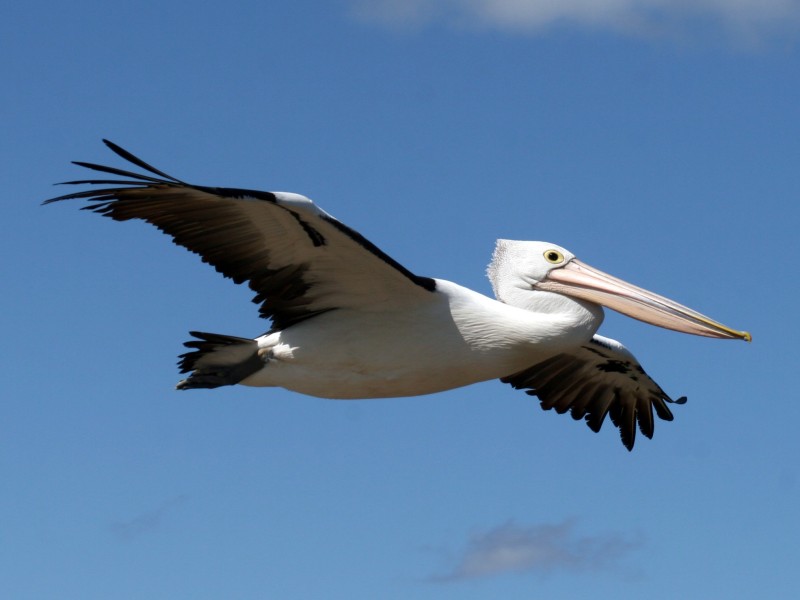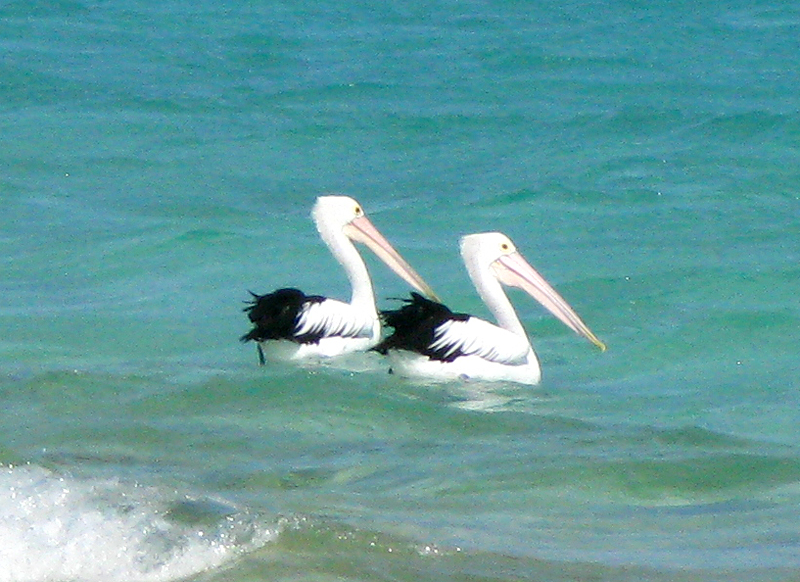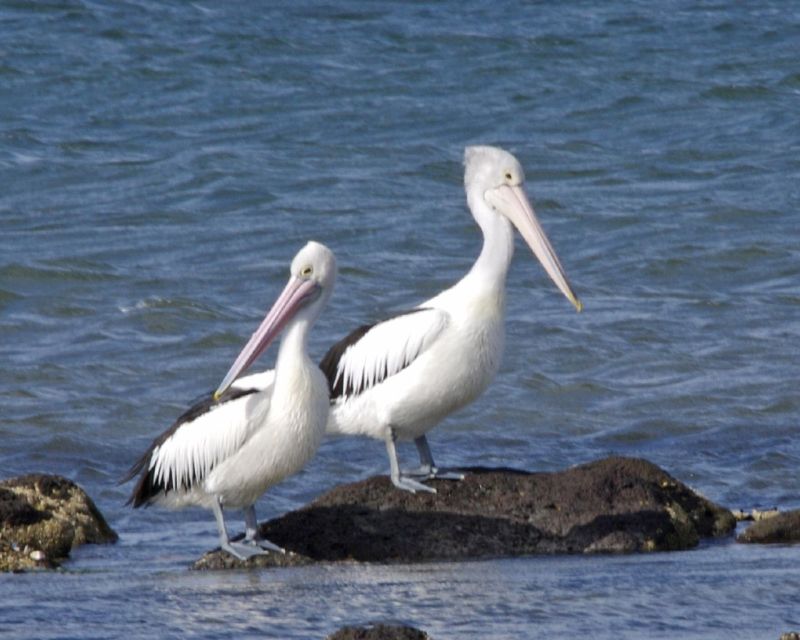Colours
Distinguishing features
Overall, it is predominantly white in colour. There is a white panel on upper-wing and white-V on rump set against black along the primaries. During courtship, the orbital skin and distal quarter of bill are orange-coloured with the pouch variously turning dark blue, pink and scarlet. The non-breeding adult has bill and eye-ring pale yellow, pouch pale pinkish.
The juvenile similar to adult, but black replaced w brown and white patch on upper wing reduced. Overall, their appearance is somewhat similar to several other pelicans, though the species is allopatric. (Wikipedia)
Size
- From 152 cm to 158 cm (Includes the bill.)
Weight
- From 4 kg to 13 kg
Wingspan
- From 230 cm to 260 cm
Synonyms
Interesting facts
- They have the largest bill of all birds. Pelicans eat other birds. They will either swallow them alive or pin the bird underwater and drown them first.
Distribution
Distribution and habitat preferences
This species can occur in large expanses of Australia and Tasmania. Australian Pelicans occur primarily in large expanses of open water without dense aquatic vegetation. The habitats that can support them include large lakes, reservoirs, billabongs and rivers, as well as estuaries, swamps, temporarily flooded areas in arid zones, drainage channels in farmland, saltplans and coastal lagoons. The surrounding environment is unimportant: it can be forest, grassland, desert, estuarine mudflats, an ornamental city park, or industrial wasteland, provided only that there is open water able to support a sufficient supply of food. However, they do seem to prefer areas where disturbance is relatively low while breeding. They may also roost in mudflats, sandbars, beaches, reefs, jetties and piles. (Wikipedia)
Local abundance
- Lizard Island, Queensland, Australia: Rarely seen at Lizard Island. A small number of individuals is seen occasionally at nearby Eagle Island.
Diet
They feed by plunge-diving while swimming on the surface of the water. They work in groups to drive fish to shallower water, where they stick their sensitive bills in to snatch their prey. Some feeding grounds in large bodies of water have included up to 1,900 individual birds. They will sometimes also forage solitarily. Their predominant prey is fish. However, the Australian Pelican seems to be less of a piscivore and more catholic in taste than other pelicans.
It regularly feeds on insects and many aquatic crustaceans, especially the Common yabby and the shrimps in the Macrobrachium genus. It also takes other birds with some frequency, such as Silver gulls and Grey teal, including eggs, nestlings, fledgings and adults, which they kill by pinning them underwater and drowning them.
Reptiles and amphibians are also taken when available. (Wikipedia)
Web resources
References
- Smith, G.C. (1987). The birds of Eagle Island, a tropical sand cay on the northern Great Barrier Reef, Australia, The Sunbird, 17(1): 1-11. LIRS catalog number 245.







